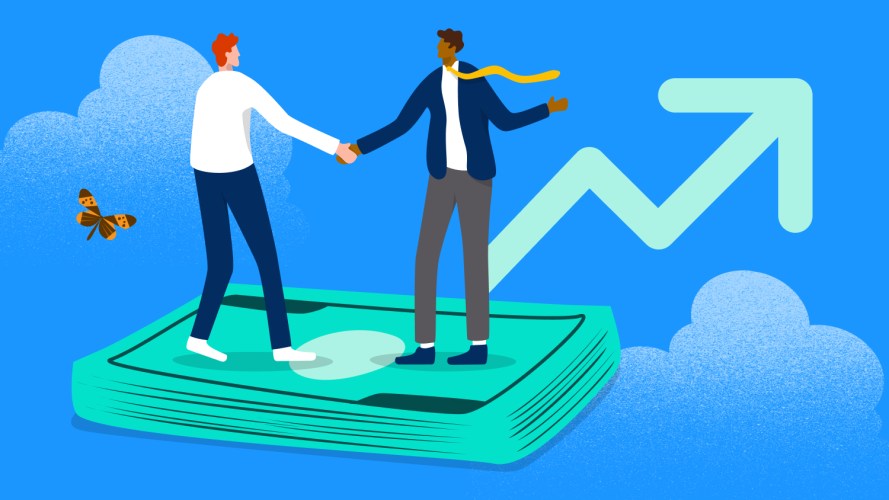3 Ways Generative AI Will Help Marketers Connect With Customers
3 min read


Imagine it’s the beginning of Q4. You’re meeting with your company leadership to go over year-end targets. Your sales team is close to meeting their quota. Your reps just need a push to stay motivated. Now is the time to reveal the ace up your sleeve — sales SPIFFs.
Sales SPIFFs, or incentives for reps, are an excellent resource to help your team achieve their full potential. Below, you’ll learn why businesses choose SPIFFs to enable sales and how to create an effective SPIFF program.
Get complete incentive management in one package, complete with commission calculations, custom rep statements, and notifications.



SPIFFs, or Sales Performance Incentive Funds, are short-term sales incentives used to motivate salespeople to achieve goals or sales targets within a set timeframe.
For example, you might tell your sales team they can earn a bonus on top of their salary and commission, for selling [X] products above quota by the end of the month or for booking [X] demos in a quarter that lead to a sale.
SPIFF reward types can vary from vacations to gift cards to event tickets, but they are typically monetary bonuses. For this reason, businesses must be mindful of budget constraints when allocating funds for SPIFF purposes.
While a SPIFF rewards individual salespeople for exceeding their personal sales quotas, a SPIV (Sales Program Incentive Voucher) incentivizes teamwork. Here are some key differences between the two:
| SPIFF | SPIV |
| Focus: Short-term sales campaigns or specific goals | Focus: Long-term sales engagement and company loyalty |
| Structure: Individual, focused on specific campaigns or sales periods | Structure: Team-based, often based on cumulative performance over time |
| Impact: Drives immediate action and achievement of sales goals | Impact: Encourages sustained performance and brand loyalty |
| Sustainability: Often used by smaller companies or for motivating quick sales surges | Sustainability: Ideal for larger companies with established sales structures and longer sales cycles |
If you’re looking for long-term, structured motivation, focus on commissions. SPIFFs are one-time-offered incentive programs. Sales commissions are part of a sales rep’s compensation plan. Salespeople usually earn a base salary plus a commission, typically a percentage of sales.

3 min read

6 min read
Businesses have many options for choosing SPIFFs for their sales teams. Let’s look at a few:
When your business can’t seem to get over the hump for meeting necessary sales targets on deadline, SPIFFs are a great tool to lean on. Beyond the obvious of increasing sales, SPIFFS can help you:
Sales SPIFFs are excellent for short-term strategies that need extra fuel to reach the finish line. There are pitfalls to avoid if you want to see your incentive program succeed. Let’s look at some problems that can come with implementing SPIFFs:
Generic or low-value rewards, like a pizza party or a gift basket, won’t create enough excitement to drive performance.
If a SPIFF only benefits top performers, it can breed resentment among the rest of the team and create a toxic work environment that disrupts productivity instead of encouraging it.
Setting goals that are too high or too low can demotivate your team. Too high? It may not feel doable. Too low? People might decide it’s not worth their time.
Before jumping headfirst into setting up your SPIFF program, let’s explore the different types of SPIFFs you could offer.
Designing an effective SPIFF can ignite your team’s performance and help you reach sales targets. Let’s look at the key steps you should take to implement a program:
What do you want to achieve with your SPIFF? A clear goal is the basis of your incentive plan, but you must also know how to get there. Make sure to include who can participate, key milestones, and a deadline. Define exactly how many products your reps need to sell, give an explicit timeframe, and communicate the program to your team.
You can integrate your SPIFF objectives into your CRM platform, so your team has the information at their fingertips. When you combine your CRM with sales incentive compensation management software, teams can use dynamic dashboards to easily view progress against goals and potential earnings.
Incentives only work when they provide value to your team. Cash is king, but you might consider offering other high-value incentives like flight vouchers and PTO for vacations. Tailor the rewards to your team’s preferences for maximum impact. Survey your sales reps and ask for their award preferences.
SPIFFs impact your budget, so it’s important not to offer SPIFFs if you can’t afford to. Reserve them for driving short bursts of momentum needed to reach a major target or two within a year.
Make sure everyone understands the SPIFF, including its rules, goals, and timelines. For example, a sales rep should know exactly how many new leads, demos, scheduled meetings, and closed deals are expected of them to hit the target. This way, when you check in with them, it will be easy to gauge their progress.
After you complete a SPIFF, analyze its impact on your sales performance. If it was successful, you can use it as a blueprint for future iterations. If not, you can make adjustments and try again.
The workplace is competitive, and keeping quality sales talent is increasingly difficult. That’s why SPIFFs are so helpful; they offer a fun, exciting, and temporary way to encourage motivation and teamwork in meeting sales goals. Overall, make sure you focus on positive motivation, fair competition, and clear communication to ensure a successful incentive program for your team.
Learn how Sales Performance Management helps you connect customer data to sales planning and execution.




Get the latest articles in your inbox.